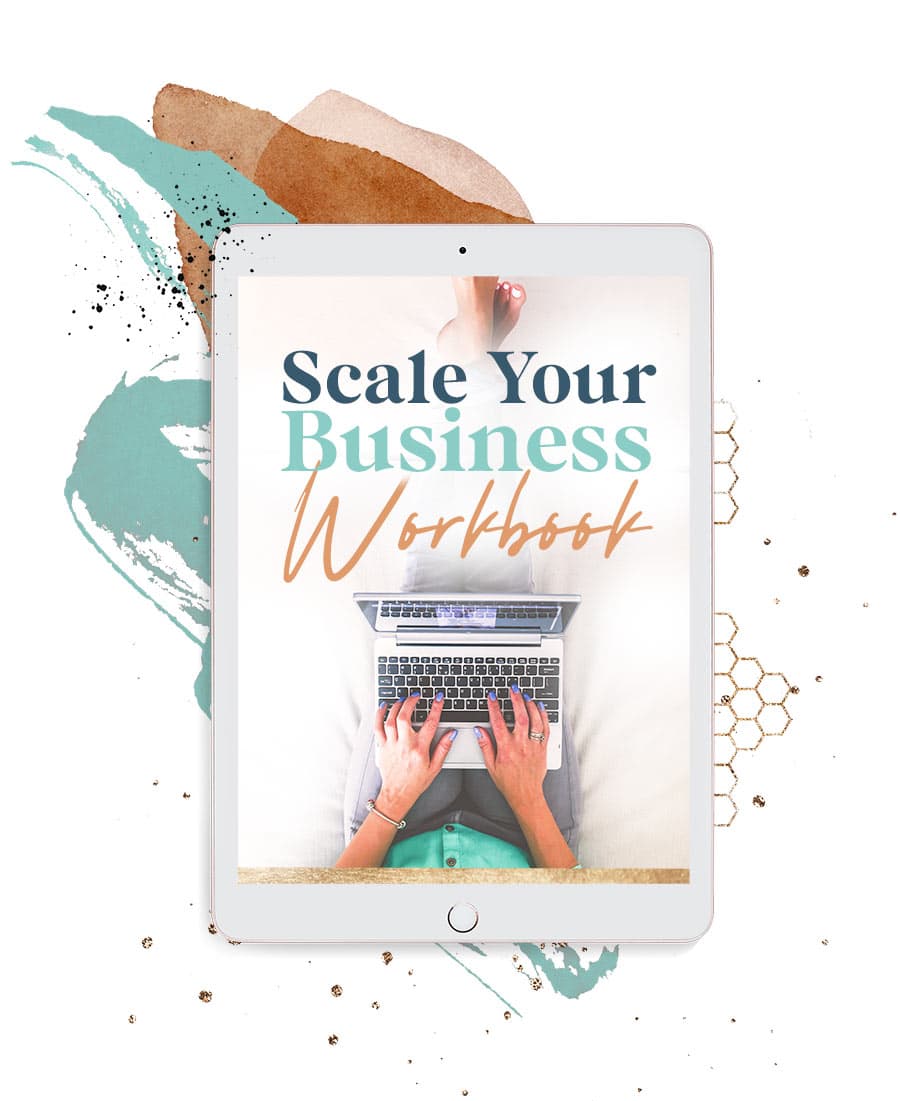The term “message” gets thrown around a lot in the online space–and it seems to have multiple (and varying) definitions.
So, if you’re here because you don’t have a brand message (or don’t even fully understand what one is), you’re in the right place.
One thing is forever true, though: Whether you’re a newbie entrepreneur or a seasoned pro, defining your brand message is key to standing out in a crowded market. But if you’re not quite sure what your message is – and need a bit of help figuring it out – this is for you.
So, what is a brand message?
A brand message is a clear statement that explains what you stand for, how you’re different and/or the unique viewpoint you hold about your industry.
Your brand message helps you position yourself and stand out in comparison to other peeps with your same skills.
A brand message is also touchstone you can refer to again & again, that makes creating content (and anything else, from offers to freebies) a breeze. (You can literally use your message to create anything from your website copy to your tagline to your blog posts.)
It helps ensure you saying the right things to the right people (aka your ideal clients), in a way that speaks directly to them and inspires them to action (whether that’s signing up for your freebie or snagging your latest course).
It also keeps you on track when creating content, so you don’t confuse your audience (by talking about loads of unrelated-to-your-message topics) and/or unintentionally contradict yourself. And–when done right–it’ll help you call in the right clients (ones who totally get you and appreciate your viewpoint)
If you’re like, “Cool, that sounds great in theory, but how do I actually discover and name mine?” I got you.
Grab your favorite beverage (I won’t judge if it’s caffeinated 😉 ) and let’s dive in to exactly how to find, define and articulate your brand message.
You’ll want to start by going through each of the following steps. If one doesn’t help you suss out your brand message, one of the others should. Let’s dive in!
1) Refer Back to Your Why
Your message and your “why” can (but aren’t always) tied together. In my case, I do what I do because I value time freedom over pretty much anything else. My business is set up in a way that allows me to live out that vision. And my ideal clients all want their own version of time freedom, too.
That said, time freedom (my why) is also part of my brand message. The other part is that time freedom is possible in a variety of different ways – including through selling digital products.
But why do you do what you do? What gets you out of bed in the morning (besides coffee, obviously)?
Your answer might tell you your message right off the bat. If your answer is, “I write copy because I want all women to be able to sell their gifts with ease online,” your brand message might quite literally be, “All woman can sell their gifts with ease online.”
However, if your why is more like, “I do this because I want to stay home with my babies” and your clients aren’t also moms who want to stay home with their babies, then it’s likely not quite so closely tied.
2) Clarify Your Unique Viewpoints
Another easy way to figure out your brand message is to get clear on your unique viewpoints about your industry. Like I mentioned, I believe that you can create time freedom by scaling with digital products and not just high-ticket coaching. I also believe outsourcing is key when looking to scale.
Is there anything you think or believe differently than others in your niche?
What do you stand for in business?
What do you stand against?
What actually matters to you?
You can also ask:
Who are your competitors? What are they saying–what do you think their ‘message’ is? And what do you believe differently?
Let’s say you’re a Pinterest manager or Pinterest consultant. Your message might be that you stand for less social media burn out and a more “slow-yet-sustainable” approach to social media. Or, it could be that what actually matters to you most is that your clients create sustainable, long-term, financially profitable businesses, rather than “flash-in-the-pan” overnight success that doesn’t last (which can sometimes happen when creators get super popular on social media without long-term lead generation systems–like Pinterest–set up to run for them in the background).
3) Identify Your Unique Value Proposition (UVP)
If none of the above have given you that lightbulb moment, I’ve got a million-dollar question that just might do the trick: what makes you different?
Your unique value proposition is your secret sauce – the special something that makes your brand irresistible to your audience.
Here are a few questions to ask:
Who are you? What do you do best?
What makes you or your approach different?
What sets you apart from the competition?
An example here? Perhaps you’re a former corporate CEO who now speaks out against how toxic corporate culture is, and now works as a business coach to help young women create their own ventures online. Your past experience – as a corporate CEO – would set you apart and factor into your overall message that corporate jobs are soul-sucking and not the only way to make a solid living.
4) Don’t Forget to Define Your Target Audience, too
Sometimes your message is hidden in plain sight: in who you serve. For example, are you “just another business coach”–or are you a business coach for Gen Z post-grad “girlies” who want to start their own online biz so they never have to get a crappy, thankless corporate job?
Or, are you “just a copywriter”–or are you a copywriter who works specifically with web designers, so you can offer their clients conversion copy so their sites are both beautiful and inspire action?
If you serve a unique or underserved market, your target audience can actually be a part of your message. You might wind up defining what you do like this: “I empower Gen Z girlies to skip the corporate rat race and start building wealth their own way.” Your brand message then might be even more concise, like: “I believe women can build wealth online their own way, without the rat race.” Wham, bam.
What Next?
Now that you have a better idea of the ‘core essence’ of your brand, the next step is to turn that idea into a concise, clear, coherent and memorable message (or statement).
Sometimes people use their brand message as their tagline. Other times, their message is less ‘client-facing-worthy’ and more like a short, clear statement (or even collection of adjectives or verbs – i.e., “women deserve to feel confident showing up online”).
Your brand message also isn’t a USP (although they can be closely related). It’s more about creating a powerful, impactful statement that inspires or motivates you – and again, keeps you on track – rather than pointing out a tangible differentiator, like a fast turnaround time.
So, why not give it a try? Write your own brand message statement – usually a few words to one sentence long – and see how it feels. You can always adjust it over time, but in the meantime, you can use it as a guiding light for everything you create in your biz (and watch as the ideal clients come flooding into your DMs, and colleagues start tagging you in #alltheposts asking for help in your area of expertise).







